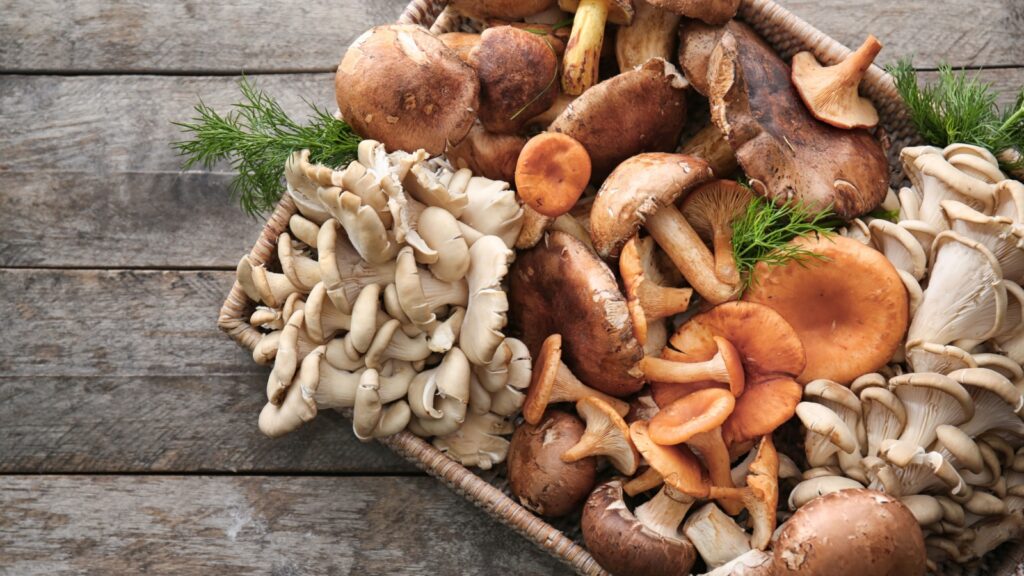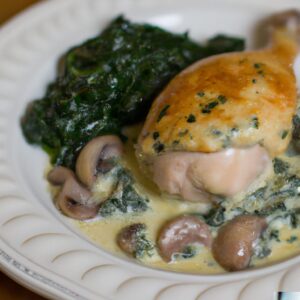Reheating food in a microwave is a convenient way to enjoy leftovers without the extra effort and time required to make a new meal. However, not all foods are suitable for microwave reheating. Some can become unpleasant or even inedible when microwaved. Therefore, it’s important to know which foods to avoid reheating in a microwave. Being aware of these can help you make better decisions about your leftovers.
MUSHROOMS
If you use the microwave to cook mushrooms, they will become rubbery and release many liquids. You can cook mushrooms on the stovetop in a sauté pan with oil or butter. This will create a tastier mushroom that isn’t all rubbery.
FISH
Fish is so delicate in flavor and texture. By gently reheating it in the oven at a mere 325-350 degrees temp, you will not risk it being overcooked and drying out. You can also flake it into a skillet for a quick “stir fry” or with just a bit of liquid to give it some moisture back and get it back up to temperature as well.
SPINACH AND OTHER LEAFY GREENS
Microwaving spinach or any other leafy green vegetable is a poor choice for two reasons. It’s likely to make your spinach all wilt-y and soft, and since leafy greens like spinach and the like have so much water in them, they heat unevenly when microwaved, and it tends to give whatever’s near the water mass the chills. Instead, go with frozen spinach on your pizza or thaw it out in the fridge first, then chop it and add it to your scrambled eggs or rice or whatever towards the end of cooking. Or better yet, use raw spinach as the base for a salad or a garnish for any hot dish.
EGGS
When reheated in a microwave, eggs have a chewy texture since they are being heated too fast. Unfortunately, eggs are the perfect place for bacteria to live. Specifically, when the heat from the microwave the egg is being reheated in, it will be the ideal temperature for the bacteria, even though you can’t see the bacteria. In addition, it is the perfect opportunity for bacteria to grow on the food since it is in a controlled environment.
COOKED RICE
Cooked rice contains the spores of a hardy bacteria, Bacillus cereus. Research shows that these spores can survive cooking and multiply when the rice is left at room temperature. If you then reheat the rice, these bacteria subsequently produce heat-resistant toxins. If these toxins are eaten, they can cause food poisoning. It is essential to follow the following guidelines to avoid food poisoning from reheated rice. Firstly, keep cooked rice in the fridge. Secondly, reheat the rice thoroughly.
CHICKEN WINGS
While microwaving chicken wings will save time, there’s a good chance you’ll end up with soggy wings with rubbery skin and dried-out meat. A better way to reheat chicken wings is to place them on a wire rack on a baking sheet and bake them in an oven or toaster oven until heated through and crispy, up to 15 minutes. Another option is to reheat the wings in an air fryer for a few minutes.
PIZZA
Reheating your pizza in an oven or skillet is a better way to bring that new pizza taste rather than using a microwave, which can leave your crust soft and cheesey. This method helps keep that crust crispy and melty cheese for an overall good, gooey slice.
FRIED FOODS
The microwave works fine for making them if you want them to taste and feel soggy. Fries are especially nasty. They go from crispy to limp within seconds in the microwave. You can save them by putting them on top of something you’re microwaving, like a sandwich, but there is a better way. Put them in the oven or on a skillet to get them close to what they would be like if you ordered them straight from the fryer.
CREAMY SAUCE PASTAS
Creamy sauces can separate and become oily when reheated. To avoid this, reheat pasta dishes gently on the stovetop, stirring frequently to redistribute the sauce and heat evenly. This helps envision a way to keep the sauce creamy while ensuring the pasta stays tender and flavorful.
CASSEROLES WITH DAIRY
On the other hand, casseroles made up of any dairy will most likely curdle and separate if you try to reheat them in the microwave. Instead, try reheating it in the oven at a low temperature or on the stovetop at a low heat. This will allow all of the dairy –cheese/milk, etc.- to even out within the dish and not have a distasteful texture.
BREADED FOODS
Although a microwave can reheat breaded foods, this may result in a loss in the food’s crispiness, causing the food to be soggy. An excellent method to reheat breaded foods would be to use an oven or air fryer. Using an oven or air fryer would result in the regular crispiness of the breaded foods and the usual warmth when heated. This reheating method helps preserve the texture and breading flavor while ensuring the inside is moist and tasty.
POTATOES
Do not use microwave ovens to reheat potatoes. Uneven heating will result in a poor taste and texture. On the other hand, potatoes can be reheated in a conventional oven or an air fryer. The method will make sure the potatoes are reheated evenly so that the taste and texture will still remain at their best
RICH SAUCES
Sometimes, those rich and delicate sauces can get tricky. When you heat them in a microwave, the next thing you know, the sauce has separated, and now that seems to be a bit oily. Reheating dishes with delicate sauces requires more of a gentle technique. First, we will want to set up our burner on a low setting on your stove and then put your sauce into a small saucepan, or you can use the same pot you originally mixed your sauce in. Turn your heat on low, and stirring will help keep your sauce’s texture smooth. Once your sauce is hot, you can add the new batch of food to the pan.
COFFEE
You should reheat those leftovers in the microwave if you drink your daily required amount of coffee. That’s a big no-no! Why? Reheating coffee can taste a little more bitter and lose its aroma. Instead of this, make a fresh cup. This will make sure it tastes just as good as before and also smells fantastic.
USING PLASTIC CONTAINERS TO REHEAT FOOD IN THE MICROWAVE
Two chemicals that can harm our bodies are BPA and phthalates. Reheating foods in a microwave plastic container will release harmful chemicals into your food. One way to prevent this is to microwave your food in glass or ceramic bowls.



